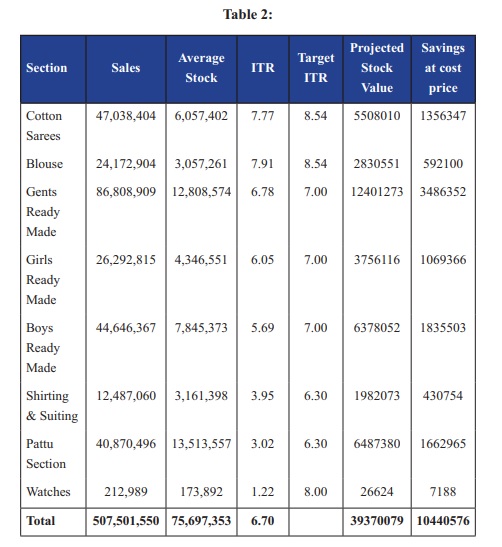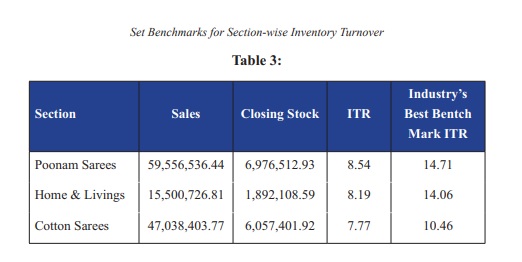Inventory turnover is how many times the company rotates its inventory
during the year.
For example, if a company’s sale is 100 crores and the average inventory
maintained is 20 crores, then the inventory turnover would be five times
(100 crores/20 crores)
Tracking inventory turnover and benchmarking it against internal targets
and external industry standards help to focus efforts and optimize
the inventory
This is how a company does its inventory turnover analysis and
benchmarking:
Step 1 Split the product portfolio into logical sections. For instance, in
the textile business, product sections could be men’s formals,
men’s casuals, women’s western wear, lingerie, pattu, boy’s
readymade, etc.
Step 2 Get the average inventory and sales for each section for a
year and compute the inventory turnover using the formula
mentioned above.
Step 3 Now setup section-wise target benchmarks to achieve. For
example, ten times for lingerie, six times for pattu, etc. These
targets depend on the industry, and product nature and should
be achievable.
Once ITR is calculated, set up internal benchmarks (Target ITR) and
take action to improve the turnover.

The benchmarks can also be set against industry standards to see how
the company is operating against the industry.

Pro Tip
Ways to improve the Inventory Turnover Ratio (ITR)
- Reduce Procurement Lead times
– Procure frequently & make arrangements with vendors and
transporters to reduce the lead time from PO to GRN. This
enables the company to keep adequate levels of inventory
in the warehouse and procure frequently. - Replenish as per Market demand
– Perform regular sales analysis to understand how products
are moving and keep stock which matches the demand and
lead time. - Setup maximum stock levels for each section
